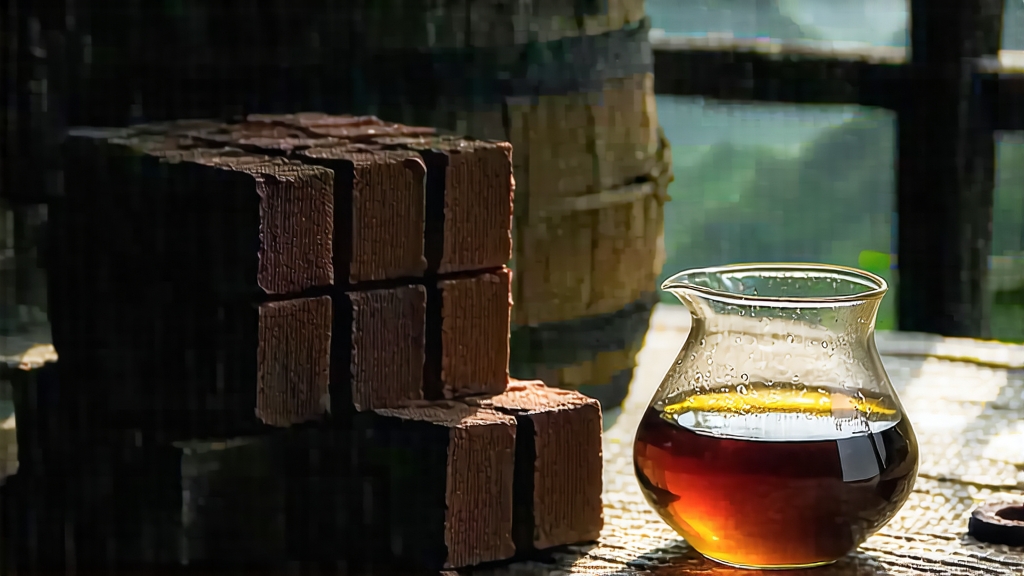
Tucked away in the humid, karst-pocked mountains of southern Guangxi, Liu Bao (literally “Six Forts”) has spent four centuries perfecting the art of quiet transformation. While Pu-erh grabs the global spotlight, Liu Bao remains the insider’s secret: a tea that Chinese dock-workers once sipped to cut river-chill, that Cantonese merchants once compressed into bamboo tubes and floated down the Xi Jiang to Hong Kong, and that modern connoisseurs now cellar like first-growth Bordeaux. To understand Liu Bao is to witness how microbes, bamboo smoke, and time conspire to turn rough leaf into liquid velvet.
History: From Border Garrison to Maritime Currency
The name Liu Bao refers to the six Ming-era fortresses that guarded the mountain passes of Wuzhou Prefecture. Tea grown there was originally bartered for horses with northern tribes, but by the Qing dynasty it had become ballast for junks sailing the Maritime Silk Road. The humid holds of sailing ships accelerated fermentation, and when the chests were opened in Singapore or Kuala Lumpur the leaf had turned glossy black, its flavor deepened by months of salt-spray and tropical heat. Merchants soon discovered that the same aging could be coaxed on land; thus Liu Bao became one of China’s first intentionally post-fermented teas, predating the ripening of Pu-erh by at least a century.
Micro-Terroirs Within One County
Today the protected origin zone covers barely 200 km² around the towns of Liubao, Shiqiao and Hechong. Within this radius, three micro-terroirs stand out. The shale-rich slopes of Tangping village yield leaf that is naturally lower in polyphenols, producing a softer, orchid-like cup. Higher-elevation Dazhushan gardens, often shrouded in cloud until noon, give leaf with a menthol coolness that lingers on the breath. Finally, the terraced fields along the Xun River receive reflected light from water, developing thicker cell walls that translate into the famous “betel-nut” finish—an addictive mix of camphor, nutmeg and dried longan that can haunt a drinker for days.
Craft: When Bamboo Becomes Both Vessel and Ingredient
Harvest begins in late April, when the standard is one bud with the first three leaves, plucked before the mountain mist lifts. After a brief outdoor withering, the leaves are wok-fired at 280 °C for exactly three minutes; this “killing-green” step arrests oxidation yet preserves the leaf’s native enzymes. The real signature comes next: a 30-second steam bath that softens the leaf before it is piled into bamboo baskets lined with rice-straw. The baskets—still warm—are carried to an underground cave whose relative humidity hovers at 88 %. Here the tea undergoes 45 days of wet-pile fermentation, shorter and cooler than the 60-day Pu-erh process, allowing Liu Bao to retain a glimmer of green vitality beneath its dark cloak. Every third day a master known as the “turner” inserts a long, cedar-handled fork and fluffs the pile, aerating just enough to encourage Eurotium cristatum, the same golden “flower” that blooms on Fuzhuan brick. Once the core temperature peaks at 46 °C, the tea is spread on rush mats to sun-dry for one afternoon, then returned to the cave for a second, drier aging of three months. Finally the leaf is steamed again, compressed into 500 g bamboo tubes, and charcoal-roasted for six hours over lychee wood. The smoke is gentle, more a kiss than a slap, yet it seals the bamboo’s lactones into the leaf, adding a creamy coconut note that emerges years later in the cup.
The Art of the Gongfu Pour
Liu Bao forgives the novice but rewards the patient. Begin by rinsing a thin-walled Yixing pot with boiling water; the clay should be duan ni or zhu ni, porous enough to breathe but tight enough to amplify bass tones. Use 6 g of leaf for 120 ml water, first flash-rinsing for five seconds to wake the compressed strands. Steep the initial infusion for 15 seconds, increasing each subsequent pour by five. The liquor runs the gamut from garnet to coffee-brown, but clarity is paramount—any cloudiness signals over-steeping. A well-aged Liu Bao can yield 12 infusions; the fifth is often